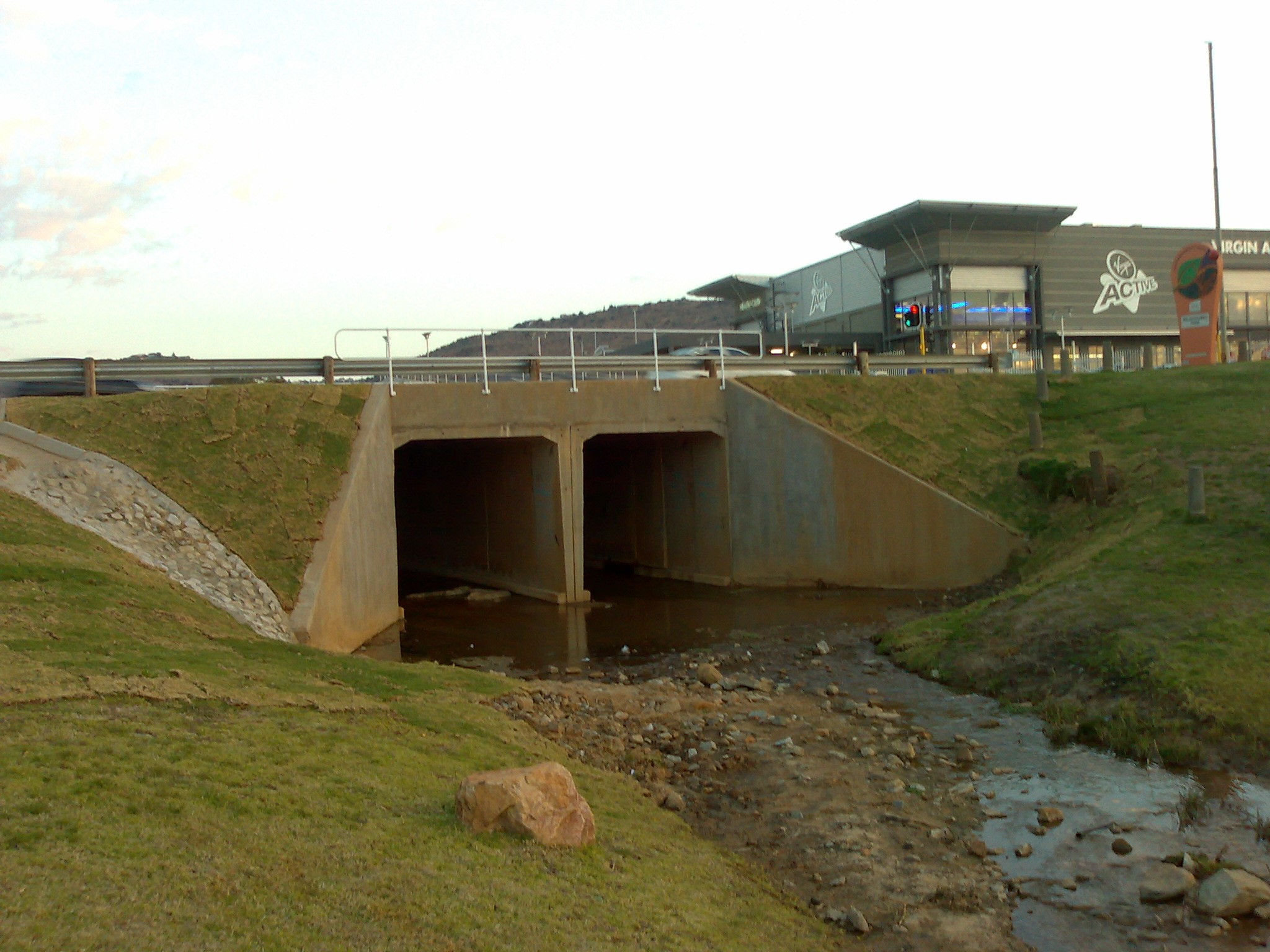 Description:
Description:
The Rectangular Portal Culvert is used in stormwater applications, primarily in providing a waterway underneath a road. The unit consists of a deck and two legs and is placed on a concrete base.
This base can be cast in-situ or prefabricated.
The culverts are supplied in 1,22m lengths and in 50S, 75S and 100S strength classes. Special strength designs can be accommodated.
Custom-made Products:
The standard culvert sizes range from a span of 450mm to 3600mm, and from a height of 300mm to 3000mm.
Special sizes can be designed and manufactured to customer specifications.
The culverts are manufactured in 1,22m lengths, but can be manufactured in special lengths to customer specification.
The standard strength classes for these pipes are 75S, 100S and 125S. Special intermediate strengths or heavier loading requirements can be designed and manufactured. These are subject to various material constraints, but will be evaluated by our engineers on an ad hoc basis.
For angled road crossings, skew culverts can be manufactured. Please use the contact us for more details on this product.
Accessories:
Precast Base Slabs
There are instances (e.g. where time constraints are in place) where a Precast Concrete Base Slab is more economical than cast-in-situ bases. These can be manufactured at any of the Rocla branches countrywide.
Areas of Use:
Rectangular Portal Culverts are used primarily in stormwater drainage applications. They are used at the road crossings to allow the water to move from one side of the road to the other.
It is the product of choice where fill height limitations are applicable. See picture.
The Rectangular Portal Culverts have also been used inverted as a drainage ditch.
Another use is as a tunnel, especially in the mines, where a conveyor runs along the centre of the culverts underneath stock-piles, down incline shafts, in cable ducts, etc.
They are ideal in applications where maintenance-free, high quality solutions are required.
Handling and Installation:
When handling any concrete products, it is important to remember that, as concrete is a heavy and somewhat brittle material, bumps or shock loads of any description are liable to damage the product. This applies particularly to sharp edges.
When offloading the products on site, the equipment must not damage the products. Portal Culverts have lifting holes cast either in the leg of the product, or in the deck, which can be used to handle the product. A sling with lifting eye and spreader bar must be used in this application. When placing the product on the ground, it is important to note that no portion of the culvert may be suspended in the air.
During the installation, the trench or excavation must be prepared to the Site Engineers specification. The base must be lined up and cast well before the installation process, so that it can be of adequate strength. If Precast base slabs are to be used, a bedding, or blinding layer must be placed and leveled. The precast base slabs can be placed directly on this and lined up and leveled.
Once the base in ready, the Portal Culverts are lowered into place using the same handling technique as before. A 10mm gap must be left between each culvert unit. The culvert and precast base sections must be staggered to prevent any settlement or movement of the barrel.
In the case of multiple barrel installations, a 100mm gap must be left between the barrels to allow for backfilling.
Backfilling of the pipe to the engineer’s specification is of utmost importance, as the culvert strength is designed to suit the installed condition. As a norm, Soilcrete is used to backfill on the sides of the culvert up to the top of the deck, as well as in between the culvert barrels in the case of multiple barrels.
Care must be taken to ensure that there are no large stones in the backfill layers above the deck, as this could impose point loads on the culverts. For more information on culvert installation, please use the contact us facility, as our staff can be of assistance on site with the installation activities.

